
You’ve passed those doors along an airport concourse, the ones with discreet plaques that say “Admirals Club” or “Sky Club.” If you didn’t already know, they’re airport lounges. Unless you’ve been inside one, however, you may wonder who and what are inside. The answer: mostly frequent flyers, enjoying an oasis of comfort and support in the airport’s otherwise-hostile environment. The downside is that getting in can be expensive—although maybe not as expensive as you might think.
If you travel only a few times a year, you might have a tough time justifying the cost of an annual or longer membership. But some programs let you in on one-day or short-term passes. And the advantages are significant.
Image Gallery
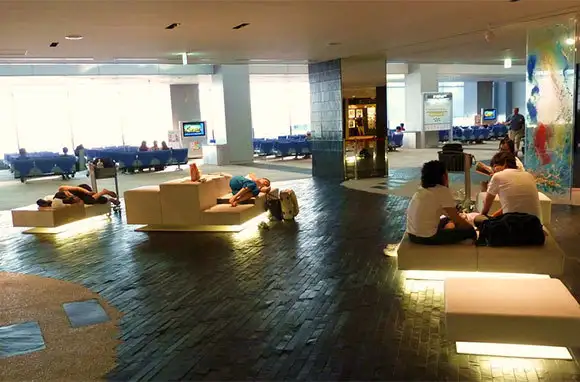
Peace, Quiet, and Space
If nothing else, the airport lounge offers large, comfortable chairs, with plenty of space to stretch out and relax—or work, if that's your style. Most offer some way to keep tabs on departing flights. Most also offer several large-screen TVs that you or your fellow guests can adjust to any available channel. Generally, cell-phone reception is good. Most lounges even offer a few pay telephones and maybe free local calls—if you still use those antiquated devices. And if you're a dedicated last-century person, they typically provide a stack of newspapers and magazines, both local and national; overseas, you almost always see a good range of U.S. and U.K. publications.

Peace, Quiet, and Space
If nothing else, the airport lounge offers large, comfortable chairs, with plenty of space to stretch out and relax—or work, if that's your style. Most offer some way to keep tabs on departing flights. Most also offer several large-screen TVs that you or your fellow guests can adjust to any available channel. Generally, cell-phone reception is good. Most lounges even offer a few pay telephones and maybe free local calls—if you still use those antiquated devices. And if you're a dedicated last-century person, they typically provide a stack of newspapers and magazines, both local and national; overseas, you almost always see a good range of U.S. and U.K. publications.
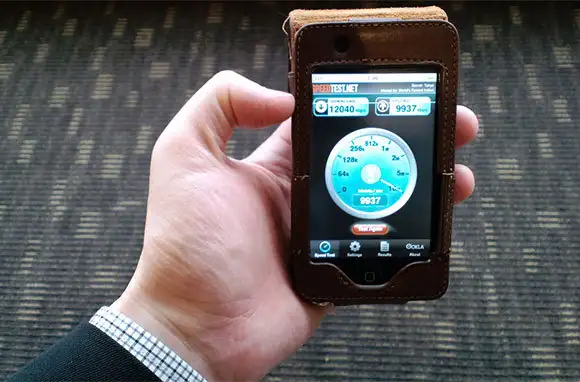
Get Down to Work
Lounges are great when you want to get some work done or go online to check email or Facebook. Most lounges provide their own computers with good Internet speed, and they also provide Wi-Fi and desks with power sources where you can use your own laptop or notebook. Getting online is generally really easy—at worst, you might have to ask for a Wi-Fi network password.

Personal Assistance
Airline-affiliated lounges are typically staffed with airline employees who have full access to the line's reservation systems and flight details. They can help you with just about anything that might require an agent: changing seat assignments, checking on upgrades, changing reservations, verifying connections, tracing wayward baggage—you name it. And unlike those at the busy "customer-service" counter with its long line, the lounge agents are much more readily available.
Some lounge memberships provide other flight-related advantages, including no-charge checked baggage, fast-track check-in, and such.
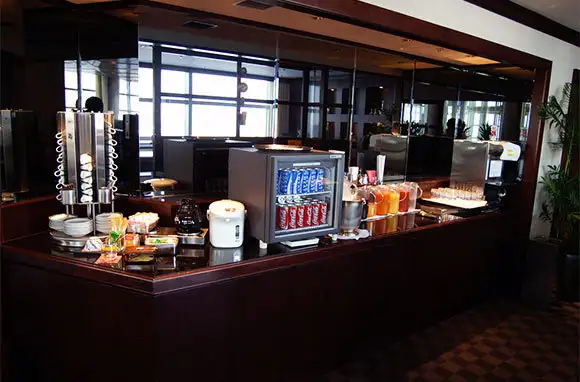
Arrival Recovery
Some lounges provide special facilities for arriving passengers. I remember when, some years back, my wife and I flew United Airlines to London in business class. At boarding, we received passes to the arrival lounge at Heathrow. The lounge featured a juice bar, clothes-pressing services, and really opulent shower facilities—and you never know just how good a shower can feel until you take one right after a long red-eye flight. This feature isn't common, but it's available in a few locations.
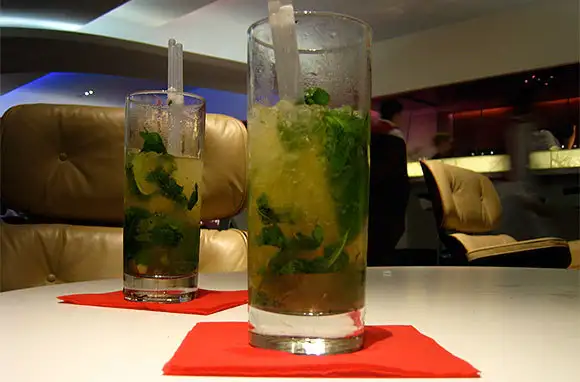
Noshes and Booze
Let's be realistic: One of the main attractions for many lounge users is the elaborate spread of noshes appropriate to the time of day. Usually, this includes a generous supply of nuts, crackers, pretzels, and such at any time, and an open bar with soft drinks, beers, wines, and popular liquors. Most clubs I've been in recently allow you to assemble your own plate of edibles and pour you own drinks—and nobody's counting—but some states or cities require waitperson and bartender service. Given that drinks at regular airport bars can easily cost anywhere between $5 and $10 each, you don't have to dent a lounge's supply much to offset the price of a one-way pass. A few lounges even prepare hot snacks, although that's not common.

Worldwide Network
Airline-sponsored lounges are typically located in the airline's most important airports, generally airside and near gates; a few also provide landside locations. Airline-lounge memberships normally include reciprocal access to lounges of other members of the same alliance, which means the four giant legacy lines—American, Delta, United, and US Airways (while it lasts), which each operate about 40 of their own locations—can provide worldwide networks of lounge access, even in areas they don't serve.
Annual membership costs are stiff: $500 for the Admirals Club (American) and the United Club (United), and $450 for the Sky Club (Delta) and the US Airways Club. Memberships that include a spouse or partner range from $675 to $825 per year. Alaska Airlines charges $450 per year for its much smaller Board Room lounge (with five locations plus 50 affiliate locations) and Hawaiian Airlines charges $299 per year for its Premier Club (with six locations, five of which are in Hawaii). Elite-level frequent flyers get a few dollars off and can pay with miles rather than cash.
Priority Pass, which operates independently of any individual airline, provides entry into a mix of airline lounges, airport-run lounges, and business- and first-class lounges around the world. Currently, its network includes 600 lounges in more than 300 cities. Although most of its lounges are outside the U.S., it has recently beefed up its U.S. listings to lounges at 38 airports. Priority Pass has three membership levels: Standard, at $99 per year, which charges an additional $27 per lounge visit; Standard Plus, at $249 per year, which includes 10 free lounge visits and charges $27 each for any additional visits; and Prestige, at $399 per year, which provides unlimited lounge access.
Most lounges limit access to travelers holding a confirmed ticket or boarding pass for a flight leaving that day.
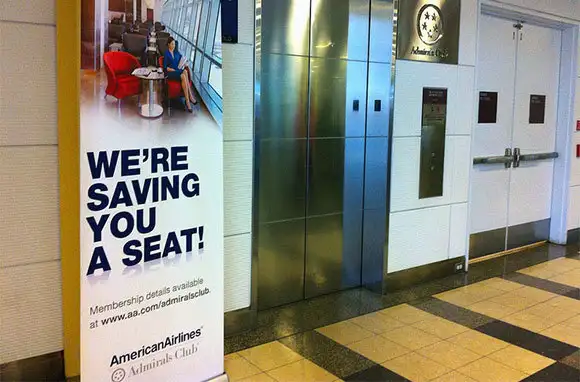
By the Day
If you don't fly enough to justify a $500 annual fee, you can get in by the day. One-day passes are available for Admirals Club, Sky Club, and United Club for $50, US Airways Club for $29 when purchased online and $50 when purchased at the club, and Alaska's Board Room for $45. And promotions occasionally provide "free" passes. Although it doesn't run a membership program, Virgin America runs lounges at four airports with entry fees of $40 per day. As noted, with Priority Pass, you can get in by paying a yearly fee of $99 plus $27 per visit.
Airspace Lounge is a new start-up that is building a network of independent U.S. airport lounges. It began with a single location in Baltimore-Washington International Airport, but the company has recently cut a deal with Swissport to boost expansion. Just this week, the network opened a lounge at Cleveland Hopkins International Airport, and within the next few months it expects to open one in Terminal 5 at JFK International Airport. Presumably, more will come after that. Entry costs start at $20 a pop but may increase if the lounge becomes crowded.

You May Not Need to Pay
In the U.S., a first-class ticket usually gets you a first-class flight. Period. However, since very few airlines in the U.S. operate first-class lounges, an airline may allow the very top frequent-flyer echelon into its regular lounges gratis.
Overseas, the picture is different. At most big hub airports, you find special and usually separate business-class and first-class lounges available to anyone holding a premium-class ticket. On my recent "burn the miles before they disappear" round-the-world trip in business class, the only places where my ticket couldn't get me into a lounge were San Francisco, Newark, and Denver.
The obvious conclusion: If you fly business class and mainly travel outside the U.S., you probably don't need to pay for a lounge network membership since the privilege is already included in your ticket.
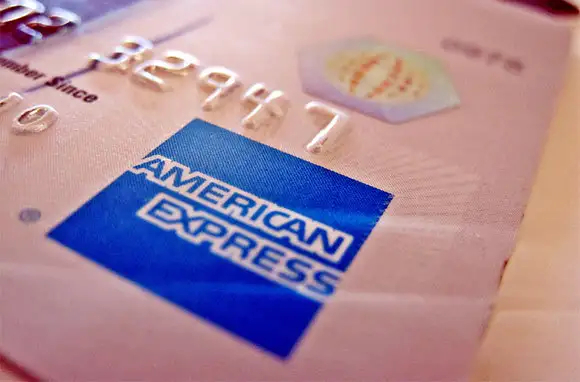
Credit Cards: The Back-Door Entry
You can get into a big lounge program without ever directly paying for a membership. American's AAdvantage World Elite MasterCard (with an annual fee of $450), Delta's SkyMiles Reserve American Express card (with an annual fee of $450), and United's MileagePlus Club Visa card (with an annual fee of $395) all include entry into their sponsor lines' lounges. These cards also include a no-charge checked bag (two on United), enhanced mileage earning, no surcharges on foreign purchases, plus a laundry list of other airline benefits and premium credit-card extras. If you qualify, they're really a better value than joining the lounge program separately.
AmEx's Platinum Card, with an annual fee of $450, includes lounge entry at Admirals Club, Sky Club, and US Airways Club lounges; Priority Pass membership; and a lot of premium travel enhancements.
More From Smartertravel:
- 10 Things You Didn't Know You Could Ask for on a Plane
- 'Free' Credit-Card Benefits You Don't Know You Have
- Seven Ways to Get a Free Upgrade on Your Next Trip
Like this story? Join the 1 million other travelers who read our free Deal Alert newsletter. It's full of our best tips, trip ideas, and travel deals. Subscribe here today!
We hand-pick everything we recommend and select items through testing and reviews. Some products are sent to us free of charge with no incentive to offer a favorable review. We offer our unbiased opinions and do not accept compensation to review products. All items are in stock and prices are accurate at the time of publication. If you buy something through our links, we may earn a commission.
Related
Top Fares From
Today's Top Travel Deals
Brought to you by ShermansTravel
Greece: 9-Night Vacation, Incl. Meteora &...
Exoticca
 vacation
$2099+
vacation
$2099+
New Year Sale: Luxe, 9-Nt Alaska...
Oceania Cruises
 cruise
$3599+
cruise
$3599+
Ohio: Daily Car Rentals from Cincinnati
85OFF.com
 Car Rental
$19+
Car Rental
$19+



